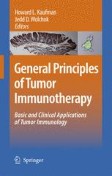Search
Search Results
-
An oncolytic virus derived from type 2 herpes simplex virus has potent therapeutic effect against metastatic ovarian cancer
Oncolytic viruses derived from herpes simplex virus (HSV) have shown considerable promise as antitumor agents against solid tumors including ovarian...

-
A new recombinant vaccinia with targeted deletion of three viral genes: its safety and efficacy as an oncolytic virus
To enhance further the safety and efficacy of oncolytic vaccinia virus, we have developed a new virus with targeted deletions of three viral genes...

-
A phase I trial of intravenous infusion of ONYX-015 and enbrel in solid tumor patients
ONYX-015 is an attenuated chimeric human group C adenovirus, which preferentially replicates in and lyses tumor cells that are p53 negative. The...

-
Evaluation of T cells as carriers for systemic measles virotherapy in the presence of antiviral antibodies
Neutralizing antiviral antibodies (Abs) can hinder systemic virotherapy. Here, we used activated T cells as carriers to deliver oncolytic measles...

-
Comparison of herpes simplex virus- and conditionally replicative adenovirus-based vectors for glioblastoma treatment
In this study we compared side-by-side the anti-neoplastic activity of the oncolytic herpes simplex virus-1 (HSV-1) vector G47Δ with that of a...

-
Isolated limb perfusion: a novel delivery system for wild-type p53 and fiber-modified oncolytic adenoviruses to extremity sarcoma
Isolated limb perfusion (ILP) is a limb salvage surgical modality used to deliver chemotherapy and biologic agents to locally advanced and recurrent...

-
Development of Tumour-Selective and Endoprotease-Activated Anticancer Therapeutics
The therapeutic index for current chemotherapeutic agents is low based on the high frequency of systemic toxicities and the lack of selectivity...
-
Protease-Activated Delivery and Imaging Systems
Proteolysis has been cited as an important contributor to cancer initiation and progression. But advantage can be taken of tumor-associated proteases...
-
Imaging immediate-early and strict-late promoter activity during oncolytic herpes simplex virus type 1 infection and replication in tumors
An increasing number of oncolytic viruses have been developed and studied for cancer therapy. In response to needs for non-invasive monitoring and...

-
Local Gene Therapy for Cancer
Cancer is an important problem in public health worldwide. Gene therapy has the potential for improved treatment of cancer patients, particularly if...
-
Synergy between expression of fusogenic membrane proteins, chemotherapy and facultative virotherapy in colorectal cancer
Using Chou–Talalay median effect analysis, we demonstrated in permanent and short-term cultures of colorectal cancer cells that the expression of...

-
The antitumor activity of TRAIL and IL-24 with replicating oncolytic adenovirus in colorectal cancer
Melanoma differentiation associated gene-7 (Mda-7)/IL-24 was previously cloned into ZD55 (an adenovirus with E1B55 deleted) to form ZD55-IL-24, which...

-
Pharmacokinetics of oncolytic measles virotherapy: eventual equilibrium between virus and tumor in an ovarian cancer xenograft model
Because of their ability to replicate, the dose–response relationships of oncolytic viruses cannot easily be predicted. To better understand the...

-
Potent antitumor efficacy of XAF1 delivered by conditionally replicative adenovirus vector via caspase-independent apoptosis
XAF1 is a newly identified tumor-suppressor gene that can antagonize XIAP and sensitize cells to other cell death triggers. In this study, we...

-
Different susceptibility of osteosarcoma cell lines and primary cells to treatment with oncolytic adenovirus and doxorubicin or cisplatin
Despite improvements in treatment regimens for osteosarcoma (OS) patients, survival rate has not increased over the last two decades. New treatment...

-
Release of Heat Shock Proteins: Passive Versus Active Release Mechanisms
There is now no doubt that heat shock proteins have a profound immunoregulatory effect on the host’s immune system. This knowledge has successfully...
-
Oncolysis and suppression of tumor growth by a GFP-expressing oncolytic adenovirus controlled by an hTERT and CMV hybrid promoter
One of the challenges of oncolytic virotherapy is the inability to easily track or monitor virus activity during treatment. Here we describe the...

-

-
Use of synthetic vectors for neutralising antibody resistant delivery of replicating adenovirus DNA
Use of synthetic vectors to deliver genomes of conditionally replicating lytic viruses combines the strengths of viral and non-viral approaches by...

